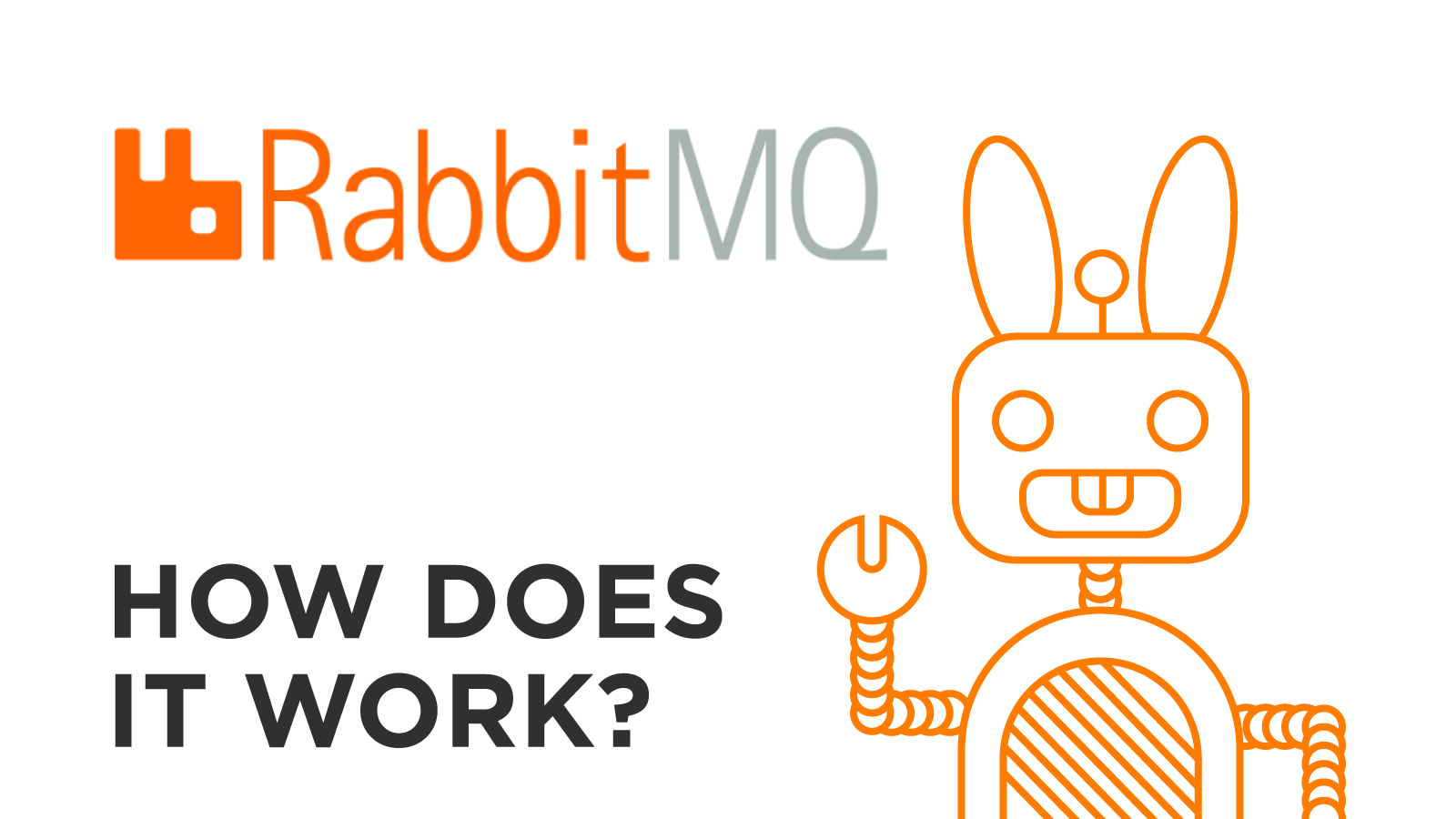RabbitMQ
前言
什么是MQ?
MQ全称为Message Queue, 消息队列(MQ)是一种应用程序对应用程序的通信方法。应用程序通过读写出入队列的消息(针对应用程序的数据)来通信,而无需专用连接来链接它们。消 息传递指的是程序之间通过在消息中发送数据进行通信,而不是通过直接调用彼此来通信,直接调用通常是用于诸如远程过程调用的技术。排队指的是应用程序通过 队列来通信。队列的使用除去了接收和发送应用程序同时执行的要求。

什么是RabbitMQ?
RabbitMQ是一个在AMQP基础上完整的,可复用的企业消息系统。他遵循Mozilla Public License开源协议
RabbitMQ是一个消息代理:它接受和转发消息。 您可以将其视为顺丰快递:当您将要发布的消息快件给到顺丰快递手上,您可以确定顺丰以及快递小哥最终会将邮件发送给您的收件人。 在这个类比中,RabbitMQ是一个顺丰快递、快递小哥、丰巢。
RabbitMQ和顺丰之间的主要区别在于它不处理实体货物信件,而是接受,存储和转发二进制数据——消息。
RabbitMQ和一般的消息传递使用了一些术语:
-
生产(Producing)就是发送(消息)。 发送消息的程序就所谓的生产者(producer )
-
队列(queue )是RabbitMQ中的邮箱的名称。 虽然消息流经RabbitMQ和您的应用程序,但它们只能存储在队列中。 队列只受主机的内存和磁盘限制的约束,它本质上是一个大的消息缓冲区。 许多生产者可以发送到一个队列的消息,并且许多消费者可以尝试从一个队列接收数据。 这就是我们代表队列的方式:
-
消费(Consuming )与接受(receiving)有类似的意义。 消费者(consumer )是一个主要等待接收消息的程序:
请注意,生产者,消费者和代理不必驻留在同一主机上; 实际上在大多数应用中他们没有。 应用程序也可以是生产者和消费者。
RabbitMQ安装
安装配置epel源
$ rpm -ivh http://dl.fedoraproject.org/pub/epel/6/i386/epel-release-6-8.noarch.rpm
安装erlang
$ yum -y install erlang
安装RabbitMQ
$ yum -y install rabbitmq-server
注意:service rabbitmq-server start/stop
安装API
pip install pika
or
easy_install pika
or
源码
https://pypi.python.org/pypi/pika
使用API操作RabbitMQ
回顾基于Queue实现生产者消费者模型
#!/usr/bin/env python
# -*- coding:utf-8 -*-
import Queue
import threading
message = Queue.Queue(10)
def producer(i):
while True:
message.put(i)
def consumer(i):
while True:
msg = message.get()
for i in range(12):
t = threading.Thread(target=producer, args=(i,))
t.start()
for i in range(10):
t = threading.Thread(target=consumer, args=(i,))
t.start()
对于RabbitMQ来说,生产和消费不再针对内存里的一个Queue对象,而是某台服务器上的RabbitMQ Server实现的消息队列
生产者:
#!/usr/bin/env python
import pika
# ######################### 生产者 #########################
connection = pika.BlockingConnection(pika.ConnectionParameters(
host=\'localhost\'))
channel = connection.channel()
channel.queue_declare(queue=\'hello\')
channel.basic_publish(exchange=\'\',
routing_key=\'hello\',
body=\'Hello World!\')
print(" [x] Sent \'Hello World!\'")
connection.close()
消费者:
#!/usr/bin/env python
import pika
# ########################## 消费者 ##########################
connection = pika.BlockingConnection(pika.ConnectionParameters(
host=\'localhost\'))
channel = connection.channel()
channel.queue_declare(queue=\'hello\')
def callback(ch, method, properties, body):
print(" [x] Received %r" % body)
channel.basic_consume(callback,
queue=\'hello\',
no_ack=True)
print(\' [*] Waiting for messages. To exit press CTRL+C\')
channel.start_consuming()
1、acknowledgment 消息不丢失
no-ack = False,如果消费者遇到情况(its channel is closed, connection is closed, or TCP connection is lost)挂掉了,那么,RabbitMQ会重新将该任务添加到队列中。
import pika
connection = pika.BlockingConnection(pika.ConnectionParameters(
host=\'10.211.55.4\'))
channel = connection.channel()
channel.queue_declare(queue=\'hello\')
def callback(ch, method, properties, body):
print(" [x] Received %r" % body)
import time
time.sleep(10)
print \'ok\'
ch.basic_ack(delivery_tag = method.delivery_tag)
channel.basic_consume(callback,
queue=\'hello\',
no_ack=False)
print(\' [*] Waiting for messages. To exit press CTRL+C\')
channel.start_consuming()
2、durable 消息不丢失
生产者:
#!/usr/bin/env python
import pika
connection = pika.BlockingConnection(pika.ConnectionParameters(host=\'10.211.55.4\'))
channel = connection.channel()
# make message persistent
channel.queue_declare(queue=\'hello\', durable=True)
channel.basic_publish(exchange=\'\',
routing_key=\'hello\',
body=\'Hello World!\',
properties=pika.BasicProperties(
delivery_mode=2, # make message persistent
))
print(" [x] Sent \'Hello World!\'")
connection.close()
消费者:
#!/usr/bin/env python
# -*- coding:utf-8 -*-
import pika
connection = pika.BlockingConnection(pika.ConnectionParameters(host=\'10.211.55.4\'))
channel = connection.channel()
# make message persistent
channel.queue_declare(queue=\'hello\', durable=True)
def callback(ch, method, properties, body):
print(" [x] Received %r" % body)
import time
time.sleep(10)
print \'ok\'
ch.basic_ack(delivery_tag = method.delivery_tag)
channel.basic_consume(callback,
queue=\'hello\',
no_ack=False)
print(\' [*] Waiting for messages. To exit press CTRL+C\')
channel.start_consuming()
3、消息获取顺序
默认消息队列里的数据是按照顺序被消费者拿走,例如:消费者1 去队列中获取 奇数 序列的任务,消费者1去队列中获取 偶数 序列的任务。
channel.basic_qos(prefetch_count=1) 表示谁来谁取,不再按照奇偶数排列
消费者:
#!/usr/bin/env python
# -*- coding:utf-8 -*-
import pika
connection = pika.BlockingConnection(pika.ConnectionParameters(host=\'10.211.55.4\'))
channel = connection.channel()
# make message persistent
channel.queue_declare(queue=\'hello\')
def callback(ch, method, properties, body):
print(" [x] Received %r" % body)
import time
time.sleep(10)
print \'ok\'
ch.basic_ack(delivery_tag = method.delivery_tag)
channel.basic_qos(prefetch_count=1)
channel.basic_consume(callback,
queue=\'hello\',
no_ack=False)
print(\' [*] Waiting for messages. To exit press CTRL+C\')
channel.start_consuming()
4、发布订阅

发布订阅和简单的消息队列区别在于,发布订阅会将消息发送给所有的订阅者,而消息队列中的数据被消费一次便消失。所以,RabbitMQ实现发布和订阅时,会为每一个订阅者创建一个队列,而发布者发布消息时,会将消息放置在所有相关队列中。
exchange type = fanout
#!/usr/bin/env python
import pika
import sys
connection = pika.BlockingConnection(pika.ConnectionParameters(
host=\'localhost\'))
channel = connection.channel()
channel.exchange_declare(exchange=\'logs\',
type=\'fanout\')
message = \' \'.join(sys.argv[1:]) or "info: Hello World!"
channel.basic_publish(exchange=\'logs\',
routing_key=\'\',
body=message)
print(" [x] Sent %r" % message)
connection.close()
#!/usr/bin/env python
import pika
connection = pika.BlockingConnection(pika.ConnectionParameters(
host=\'localhost\'))
channel = connection.channel()
channel.exchange_declare(exchange=\'logs\',
type=\'fanout\')
result = channel.queue_declare(exclusive=True)
queue_name = result.method.queue
channel.queue_bind(exchange=\'logs\',
queue=queue_name)
print(\' [*] Waiting for logs. To exit press CTRL+C\')
def callback(ch, method, properties, body):
print(" [x] %r" % body)
channel.basic_consume(callback,
queue=queue_name,
no_ack=True)
channel.start_consuming()
5、关键字发送

exchange type = direct
之前事例,发送消息时明确指定某个队列并向其中发送消息,RabbitMQ还支持根据关键字发送,即:队列绑定关键字,发送者将数据根据关键字发送到消息exchange,exchange根据 关键字 判定应该将数据发送至指定队列。
#!/usr/bin/env python
import pika
import sys
connection = pika.BlockingConnection(pika.ConnectionParameters(
host=\'localhost\'))
channel = connection.channel()
channel.exchange_declare(exchange=\'direct_logs\',
type=\'direct\')
result = channel.queue_declare(exclusive=True)
queue_name = result.method.queue
severities = sys.argv[1:]
if not severities:
sys.stderr.write("Usage: %s [info] [warning] [error]\\n" % sys.argv[0])
sys.exit(1)
for severity in severities:
channel.queue_bind(exchange=\'direct_logs\',
queue=queue_name,
routing_key=severity)
print(\' [*] Waiting for logs. To exit press CTRL+C\')
def callback(ch, method, properties, body):
print(" [x] %r:%r" % (method.routing_key, body))
channel.basic_consume(callback,
queue=queue_name,
no_ack=True)
channel.start_consuming()
#!/usr/bin/env python
import pika
import sys
connection = pika.BlockingConnection(pika.ConnectionParameters(
host=\'localhost\'))
channel = connection.channel()
channel.exchange_declare(exchange=\'direct_logs\',
type=\'direct\')
severity = sys.argv[1] if len(sys.argv) > 1 else \'info\'
message = \' \'.join(sys.argv[2:]) or \'Hello World!\'
channel.basic_publish(exchange=\'direct_logs\',
routing_key=severity,
body=message)
print(" [x] Sent %r:%r" % (severity, message))
connection.close()
6、模糊匹配

exchange type = topic
在topic类型下,可以让队列绑定几个模糊的关键字,之后发送者将数据发送到exchange,exchange将传入”路由值“和 ”关键字“进行匹配,匹配成功,则将数据发送到指定队列。
- # 表示可以匹配 0 个 或 多个 单词
- * 表示只能匹配 一个 单词
发送者路由值 队列中
old.boy.python old.* -- 不匹配
old.boy.python old.# -- 匹配
#!/usr/bin/env python
import pika
import sys
connection = pika.BlockingConnection(pika.ConnectionParameters(
host=\'localhost\'))
channel = connection.channel()
channel.exchange_declare(exchange=\'topic_logs\',
type=\'topic\')
result = channel.queue_declare(exclusive=True)
queue_name = result.method.queue
binding_keys = sys.argv[1:]
if not binding_keys:
sys.stderr.write("Usage: %s [binding_key]...\\n" % sys.argv[0])
sys.exit(1)
for binding_key in binding_keys:
channel.queue_bind(exchange=\'topic_logs\',
queue=queue_name,
routing_key=binding_key)
print(\' [*] Waiting for logs. To exit press CTRL+C\')
def callback(ch, method, properties, body):
print(" [x] %r:%r" % (method.routing_key, body))
channel.basic_consume(callback,
queue=queue_name,
no_ack=True)
channel.start_consuming()
#!/usr/bin/env python
import pika
import sys
connection = pika.BlockingConnection(pika.ConnectionParameters(
host=\'localhost\'))
channel = connection.channel()
channel.exchange_declare(exchange=\'topic_logs\',
type=\'topic\')
routing_key = sys.argv[1] if len(sys.argv) > 1 else \'anonymous.info\'
message = \' \'.join(sys.argv[2:]) or \'Hello World!\'
channel.basic_publish(exchange=\'topic_logs\',
routing_key=routing_key,
body=message)
print(" [x] Sent %r:%r" % (routing_key, message))
connection.close()
注意:
sudo rabbitmqctl add_user wupeiqi 123
# 设置用户为administrator角色
sudo rabbitmqctl set_user_tags wupeiqi administrator
# 设置权限
sudo rabbitmqctl set_permissions -p "/" root ".*" ".*" ".*"
# 然后重启rabbiMQ服务
sudo /etc/init.d/rabbitmq-server restart
# 然后可以使用刚才的用户远程连接rabbitmq server了。
------------------------------
credentials = pika.PlainCredentials("wupeiqi","123")
connection = pika.BlockingConnection(pika.ConnectionParameters(\'192.168.14.47\',credentials=credentials))
#!/usr/bin/env python
# -*- coding:utf-8 -*-
import pika
from pika.adapters.blocking_connection import BlockingChannel
credentials = pika.PlainCredentials("root", "123")
conn = pika.BlockingConnection(pika.ConnectionParameters(host=\'10.211.55.20\', credentials=credentials))
# 超时时间
conn.add_timeout(5, lambda: channel.stop_consuming())
channel = conn.channel()
channel.queue_declare(queue=\'hello\')
def callback(ch, method, properties, body):
print(" [x] Received %r" % body)
channel.stop_consuming()
channel.basic_consume(callback,
queue=\'hello\',
no_ack=True)
print(\' [*] Waiting for messages. To exit press CTRL+C\')
channel.start_consuming()